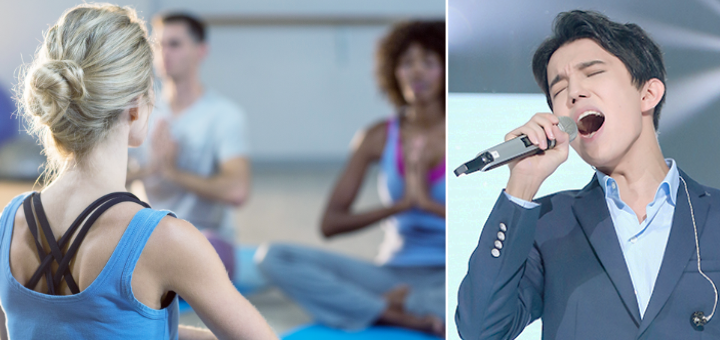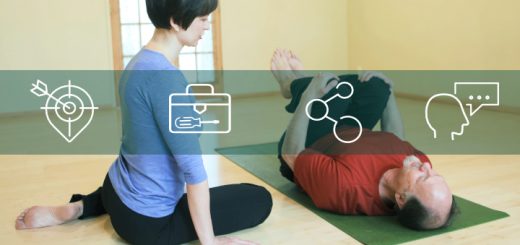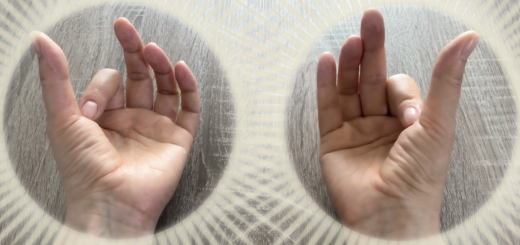What can singing teach us about yoga? How to structure effective yoga classes
16Recently I’ve been very fond of this 24-year old singer from Kazakhstan whose name is Dimash. Despite his young age he demonstrates incredible musical skill and unbelievable vocal range. He is also a great performer and a very sweet and humble kid, which is the icing on the cake. Few weeks ago, he auditioned for this new show on CBS called The World’s Best where the panel of three American judges and 50 (!) international judges voted on whether or not he would become a part of the competition. All but two judges thought that he was amazing. One of the international judges (a music producer) who voted against him later reasoned that art is subjective and he cannot be asked to separate his professional and personal opinion on the subject. He said: “You cannot judge art like you would mark a math exam.” However, other music producers and vocal coaches strongly disagreed. One of them, for example, argued on his YouTube channel that, in fact, in singing you can most definitely assess any singer on his/her range, control, intonation, and other things. He said: “I say music is 50 percent art and 50 percent technicality. So yes, there is absolutely the artistic – you have a blank canvas and you get to paint whatever you want – that’s awesome. I agree with that, it’s very subjective. But when you combine the technical aspect with that art, it gives you a much greater tool box for your ability to expand that art in other ways. They have to work hand in hand, it’s not one or the other.”
This response resonated with me very strongly because I feel the same way about yoga. I keep hearing that every yoga class is a unique manifestation of the teacher’s style and approach, and that you cannot judge it on its own merits. It is similar to that “blank canvas idea”, where whatever you put on it, even if it’s totally random, will come out as art. Even if somebody piles up a bunch of poses into a yoga class without any rhyme or reason, it’s still expected to be something great and useful. May be, maybe not. To me it’s like listening to my 7-year old who knows nothing about music play piano – it’s adorable and I applaud his effort, but it’s no symphony.
In my mind, those types of experiments can be delegated to the “art” part of yoga practice design, but they can never replace the technical aspects. There always need to be some basic universal principles that hold the practice together. For example, every yoga practice needs a purpose (otherwise why bother?); in every practice the body needs to be taken care of (with preparation and compensation for more difficult postures, for example); there needs to be some logic to the order in which poses are introduced, and some way to evaluate the effectiveness of the practice (both subjectively and more objectively). Each yoga tradition might have its own flavors when it comes to those elements, just like in music we have different genres (pop, rock, opera, rap, etc.), but some structural things still need to be present, otherwise we end up with a yogic equivalent of cacophony.
It is also my understanding that not all traditions and not all training programs offer sufficient tools for yoga teachers to feel comfortable with intelligent practice design. I heard things like “Just take Sun Salutation and throw more poses into it” as a sequencing strategy. Over the next few weeks I would like to spend time exploring different aspects of “yoga technicality”, so to speak, from the viniyoga standpoint. Viniyoga offers one of the most developed and well-articulated strategies for sequencing yoga practices that I am aware of. Personally, it gives me great comfort to have the sequencing structure that I can modify according to my needs.
In fact, my teacher Gary Kraftsow often likes to joke that before yoga teachers can get to heaven, they have to defend every yoga practice they ever taught from the perspective of logic and effectiveness. In my early days of teaching I remember leaving my classes thinking: “I am going straight to yoga hell for that sequence I just taught.” This hasn’t happened in a very long time because I taught and practiced a lot, learning from my mistakes. But if you don’t have a system to even evaluate your own classes, how would you know whether or not they are effective? With this upcoming series of posts, I want to help you establish your own system for structuring your yoga classes and evaluating the results, so you, too, can grow as a yoga professional. Along the way we will analyze some preconceived notions about teaching yoga, and may be even argue a bit about what makes more sense. I do not need you to agree with me on everything, but I do think it’s necessary for all of us to occasionally question our preset ways. I hope that you will find it useful.
Oh, and by the way, you can check out one of Dimash’s performances (with English subtitles and a little background on the song) here. This kid is in no danger of going to “singing hell” 🙂
[jetpack_subscription_form]





















Thanks Olga- I really appreciate your approach and generous sharing of your knowledge and experience! I am a longtime practitioner and teacher ( last 7 years). There is always more to learn!
Thank you Amy! And I feel the same way – there is still so much to learn!
Dear Olga, I always look forward to your posts. This one is quite moving in so many ways. Bless you and thank you!
Thank you Sally! I am grateful to hear that you connected to it. It came from the heart 🙂
I love the “intention” in the practice of this post, Olga! I will be looking forward to this new series of thought-provoking insights. Thank you!
It’s all about intention, isn’t it? Would love to hear your thoughts on that, too, Kevin once we get to it 🙂
After my 200 hour training I too felt that little attention was paid to effective sequencing. As a matter of fact, a great deal of credit went into spontaneous teaching which never seemed right to me who was labeled as a planner, perhaps an over planner. And I love Gary Kraftsows work and Viniyoga. Thank you Olga for sharing your wisdom. I have benefited so much from your posts and practices over the years. I simply love your practice APP and have recommended it to others.
Thank you so much Yvonne! I will do an entire post about planning vs spontaneity soon, and I hope to get your opinion on that. So happy to hear that you love the app!
Such a delightful comparison Olga… love your bright style of writing and ever-inquisitive thinking. Always inspiring to me and makes me think a little more deeply about ‘purpose’ of my yoga classes especially. thanks for your generosity in sharing these thoughts…
That’s great Cherise, thank you! I am so glad that my singing analogy resonated with you 😉
Olga Thanks for the sharing. Love your posts each time awakening us to new horizons
Thank you France!
I appreciate very much your posts, and your intellectual and artistic manner of expressing. I am a new teacher, and always feel as if I would be sent “straight to yoga hell”, but I won’t give up! I spend so much of my time, between teaching, designing sequencing, and then while teaching, somehow, I feel I am getting hotter ( closer to yoga hell), but I don’t give up! I am a new teacher, and I know teaching is a skill that takes time. Thank you Olga for all your posts. I enjoy them very much.
I love your spirit Janet! Please don’t give up – I know from experience that it will pass. Remember the yoga sutra? Never give up – always let go. Every new class is a new opportunity to learn something, and that’s how you grow. Thank you for sharing your experience and thank you for persisting!
?????
I always appreciate your blogs, Olga. I am following in some of your footsteps. That is, I’m a student of Gary’s now. I “get” what you write about!